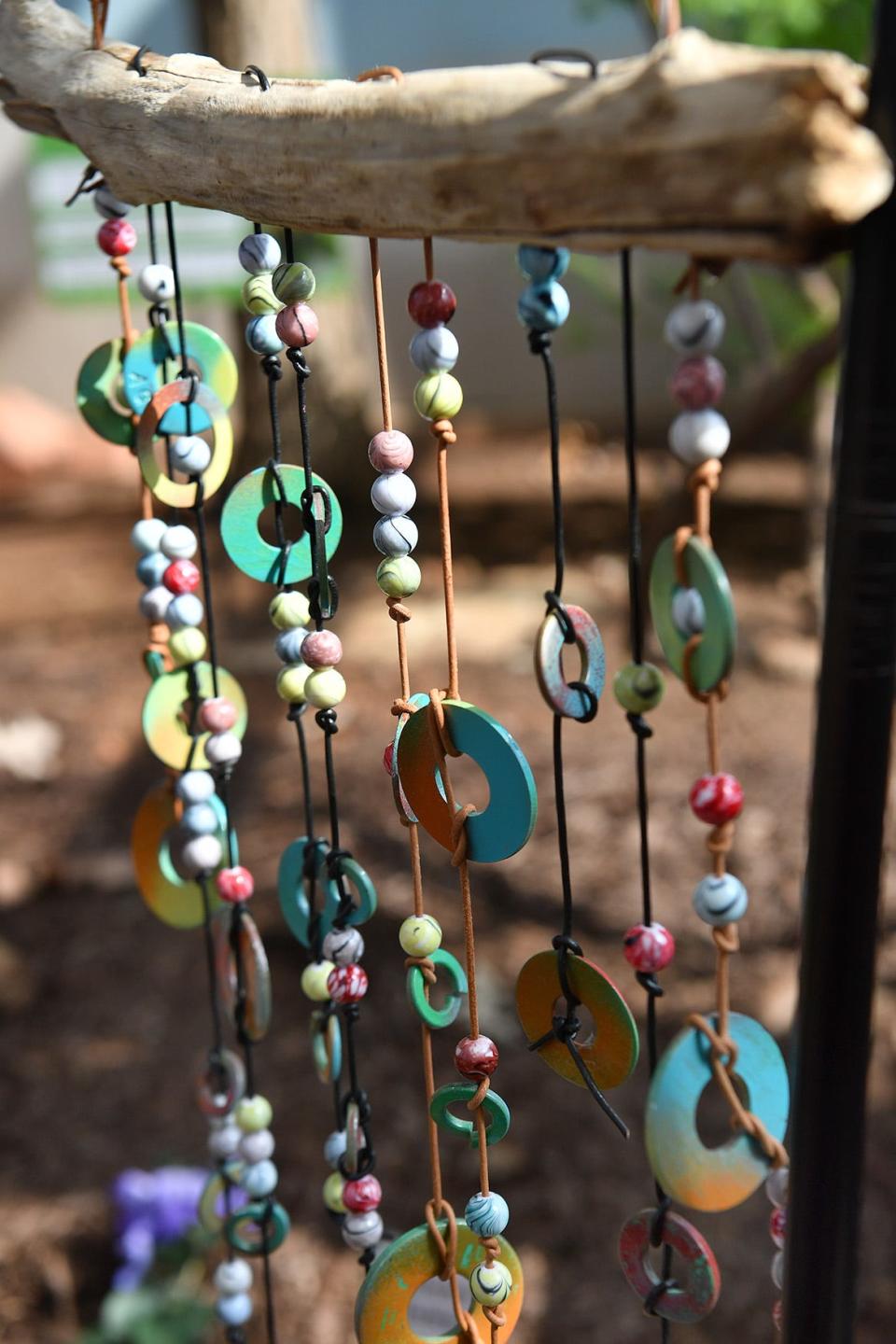Sensory gardens have healing benefits. Here's how to plan them.

Sensory gardens are often designed with children in mind. Enticing smells and bright colors are used to encourage children to interact with the outside world while simultaneously allowing nature and plants to work their magic in healing, teaching and calming.
Although these gardens are often designed with children in mind, couldn’t we all use those benefits?
Pathways through the garden are the first step in planning a sensory garden. Paths should be made of a material appropriate for the intended audience.
If you are designing the garden for small children, avoid using pebbles or rocks that could be easily ingested or thrown. For older adults or those with limited mobility, pick a path that is wide, smooth and even.
Gently wind your path so that the entire garden isn’t visible at any one point, forcing the user to explore. Small keyhole areas off the path give people the opportunity to stop and enjoy being completely surrounded by plants — consider a seat in these areas.
Vary plants for stunning visual displays
The sights of your garden may rely heavily on plant materials while also incorporating other elements.
As you plan your sensory garden, think about the most desirable visual characteristics of each plant and when they’re at their peak.
Vary plants based on the timing of their visual display so the garden always has something beautiful to offer. Daffodils that transition to peonies that lead to the blooming of roses will all give the eyes a focal point.
Sights may also include colorful glass sculptures, stone statues or anything that spins in the wind.
Wind chimes, birds or water elements add sound
Garden sounds are often the most overlooked element.
Wind chimes are the obvious addition, but don’t be afraid to vary the sizes and thus tones of the chimes for added interest. Wooden chimes, metal chimes or even glass bottles all offer different feelings to anyone listening.
Bringing animals into the garden, like birds, will bring songs into the garden as well.
Water elements, like a waterfall or fountain, provides the tranquility that the sound of running water creates.
Place fragrant plants close enough to smell
The smells of the garden should reach your nose when you get near some plants, while other require a touch or close up sniff to unlock their scents.
A fragrant gardenia or lilac will waft on a breeze while certain herbs, like basil, may take a gentle touch to fully enjoy their smell.
Smells may evoke memories or emotions that we link to those scents. Often we enjoy planting flowers that grew in our grandparents', friends' or parents' gardens as a way to remember those times or people.
Make sure fragrant plants are close enough to the path to be touched by noses.
Add touchable materials
Touch is a critical element in a sensory garden as touch allows us to connect with plants and our surroundings in an intimate way.
Along with plants with fuzzy leaves or rough bark, think about adding other touchable materials. Bumpy rocks or a smooth bamboo fence are all enjoyable for fingertips to brush across.
Include edible plants
Taste is quite possibly the most enjoyable part of a sensory garden. Fruits, vegetables and herbs can be woven into the garden, forcing you to search for the tasty bits.
Unlike other parts of the garden, taste should be enjoyed inside, after the edible parts have been washed.

Gardens can be so much more than blooming flowers and green lawns.
Next time you work in your garden, think of ways to incorporate all five senses into the space. Keep in mind comfortable places for a bench or other seating to go to encourage people to spend more time in certain areas.
Seek out plants that can stimulate multiple senses at once. A sage plant has fuzzy leaves to stroke, a calming smell, and variegated leaves offer interesting sight, smell, touch and taste.
You’ll find after time that you’ve created a calming, enjoyable space for anyone to enjoy.
Ariel Whitely-Noll is the horticulture agent for Shawnee County Research and Extension. She can be reached at arielw@ksu.edu.
This article originally appeared on Topeka Capital-Journal: Sights, sounds, smells and taste all key to planning sensory gardens

